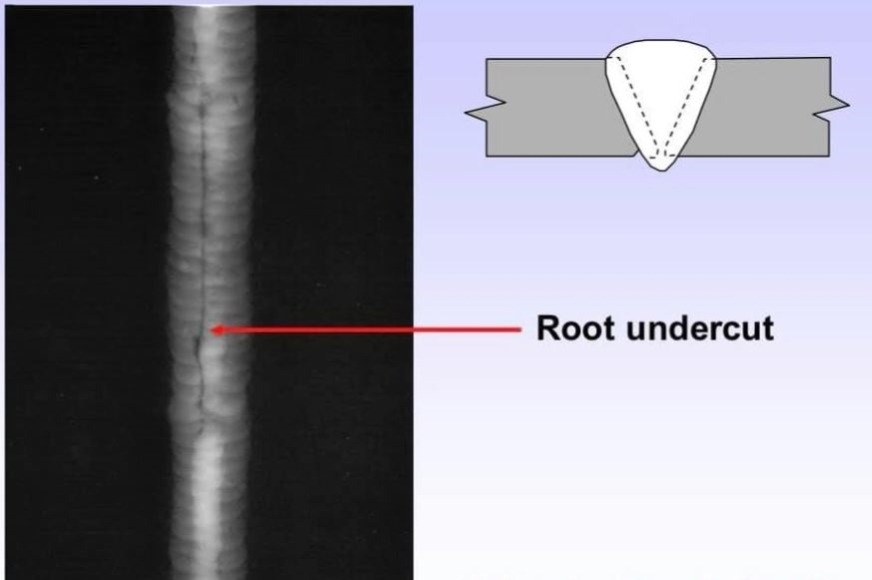Mastering the Art of Welding: Just How to Prevent Undercut Welding Issues for Flawless Manufacture Results
Effectiveness and precision are vital in the world of welding, where also the smallest blemish can compromise the structural integrity of a produced piece. One usual difficulty that welders face is undercutting, a flaw that can deteriorate a weld joint and lead to pricey rework. By comprehending the source of undercut welding and implementing effective methods to stop it, welders can raise their craft to brand-new degrees of quality (Preventing weld undercut). In the search of flawless construction outcomes, mastering the art of welding to stay clear of undercut problems is not just a skill but a necessity for those pursuing perfection in their work.
Comprehending Undercut Welding

To prevent undercut welding, welders ought to guarantee appropriate welding criteria, such as changing the current, voltage, traveling speed, and preserving the appropriate electrode angle. By understanding the causes of undercut welding and carrying out preventive measures, welders can accomplish high-quality, structurally audio welds.
Root Causes Of Undercut in Welding
Comprehending the variables that add to damage in welding is necessary for welders to create high-grade, structurally audio welds. When the weld metal does not appropriately fill the groove developed in between the base steel and the previously transferred weld metal, damaging happens. Numerous aspects can lead to damage in welding. One common cause is too much warm input. Welding at high temperatures for prolonged periods can result in the base steel thawing even more than wanted, causing damage. Inadequate welding incorrect or existing welding rate can also add to damage. Not enough current might not provide enough heat to thaw the base and filler metals adequately, while excessive rate can stop appropriate blend, triggering undercut. Additionally, inappropriate electrode angles or wrong torch manipulation techniques can create locations of reduced weld metal deposition, promoting undercut. Recognizing these reasons and carrying out appropriate welding techniques can aid protect against undercutting problems, making sure sturdy and solid welds.
Techniques to avoid Undercutting

To alleviate the risk of undercutting in welding, welders can utilize tactical welding strategies aimed at improving the quality and stability of the weld joints. Additionally, making use of the right welding strategy for the certain joint configuration, such as weave or stringer grains, can contribute to reducing damaging.
Using back-step welding techniques and managing the weld grain account can likewise assist distribute warm equally and lessen the danger of undercut. Regular inspection of the weld joint throughout and after welding, as well as implementing top quality assurance procedures, can aid in discovering and addressing damaging problems quickly.
Value of Correct Welding Criteria
Choosing and preserving suitable welding criteria is essential for attaining effective welds with marginal defects. Welding parameters describe variables such as view website voltage, existing, travel rate, electrode angle, and securing gas flow rate that directly impact the welding procedure. These specifications have to be thoroughly adjusted based on the kind of product being bonded, its thickness, and the welding method used.
Correct welding parameters guarantee the appropriate quantity of heat is put on melt the base steels and filler product consistently. If the specifications are established expensive, it can cause too much warm input, causing distortion, spatter, or burn-through. On the various other hand, if the specifications are as well reduced, additional resources insufficient combination, lack of penetration, or undercutting may occur.
Quality Control in Welding Procedures

Conclusion
To conclude, understanding the art of welding calls for a detailed understanding of undercut welding, its causes, and techniques to avoid it. By guaranteeing proper welding specifications and applying high quality assurance methods, remarkable construction results can be accomplished. It is vital for welders to consistently strive for excellence in their welding operations to stay clear of undercut issues and produce top quality welds.
Undercut her response welding, a typical flaw in welding procedures, takes place when the weld metal does not effectively fill the groove and leaves a groove or anxiety along the bonded joint.To stop undercut welding, welders ought to make certain proper welding parameters, such as changing the existing, voltage, traveling speed, and keeping the proper electrode angle. Inadequate welding incorrect or existing welding rate can likewise contribute to damage.To reduce the risk of damaging in welding, welders can utilize strategic welding strategies intended at enhancing the high quality and integrity of the weld joints.In verdict, grasping the art of welding requires a thorough understanding of undercut welding, its causes, and methods to stop it.
Comments on “Preventing Weld Undercut: Proven Approaches Every Welder Must Know”